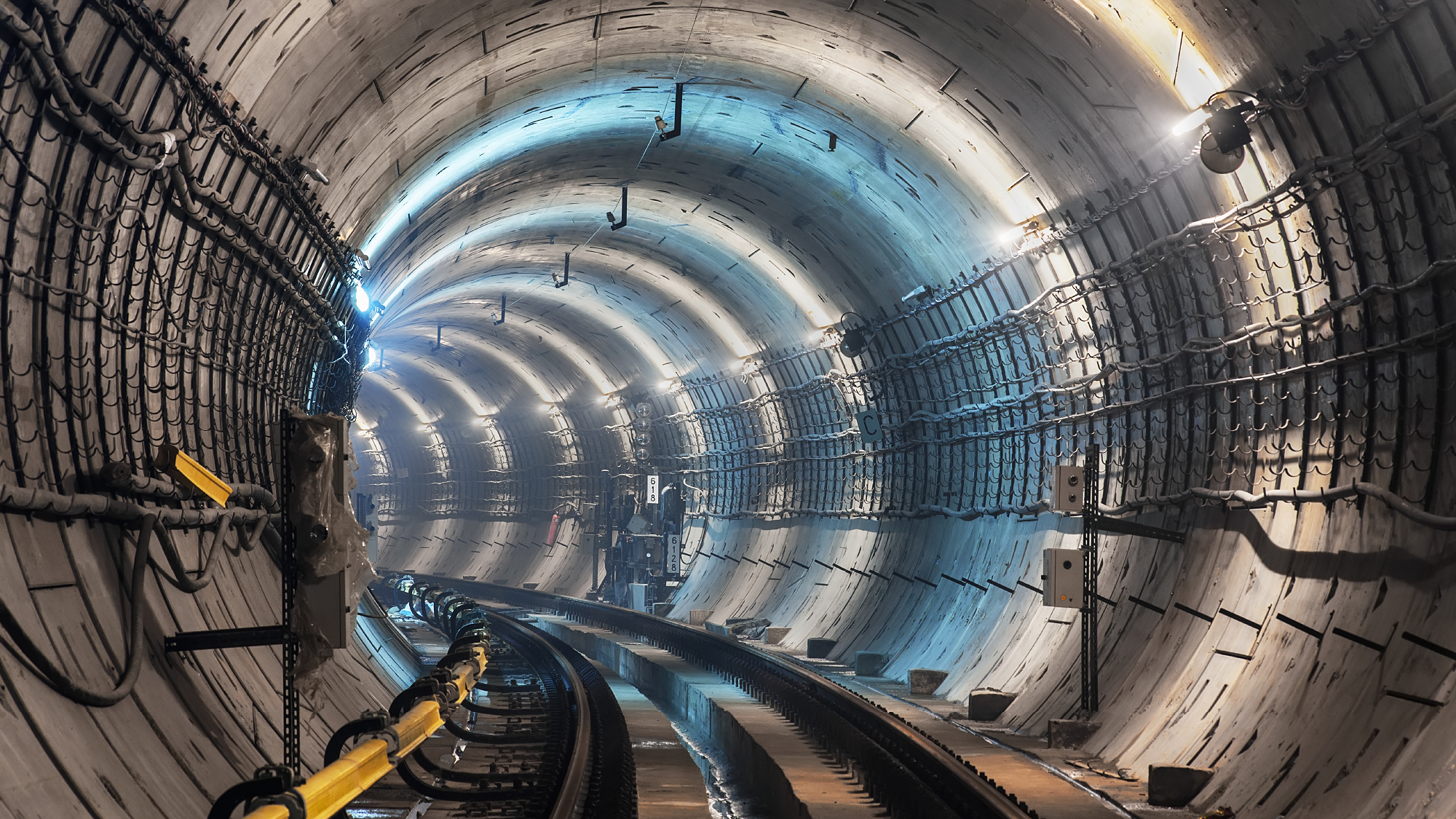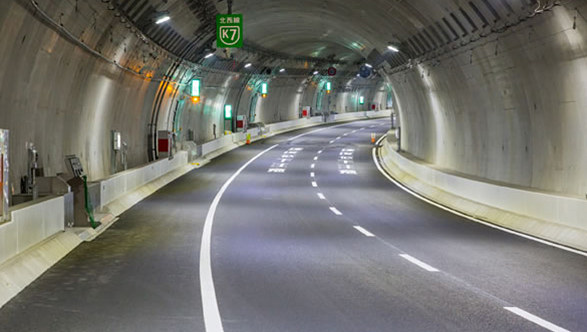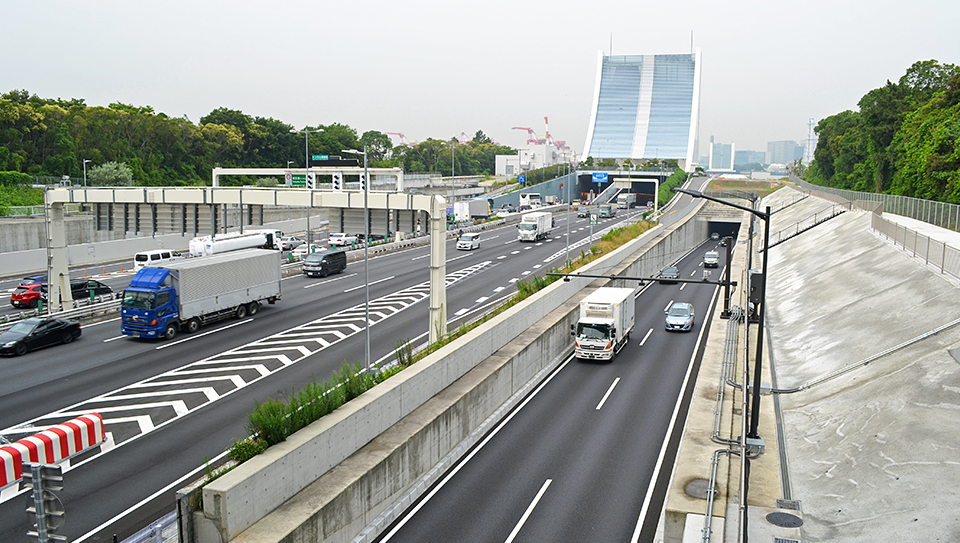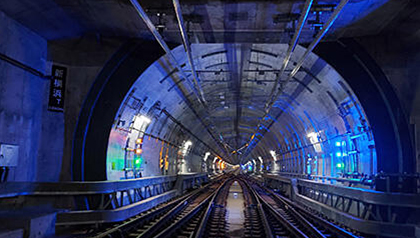
Transportation facility
Our mission
We help support the development of Japan’s transportation infrastructure in our role as specialists in tunnel design.
Design of tunnel size, route, depth and structure.
As specialists in tunnel construction, we provide a range of services, including the planning of new roads for local and regional government and expressway operators, and the planning of new line and line extensions for railway operators. For example, if a tunnel is to run from point A to point B, we plan the necessary size, route, depth, and structure. We also design tunnels to be safe, secure, and long-lasting, taking into account a range of conditions, including the ground where the tunnel is to be excavated and existing underground and aboveground structures around the proposed route.
Contributing to the convenience of the community by providing safe tunnels.
Our involvement from the design phase as consultants specializing in tunnel design allows the realization of attractive cities that are more convenient to live in.
Business overview
Tunnel design for railroad facilities
The area underneath a city is an intricate and inexhaustible web of underground structures of all kinds. Advanced underground technologies and, above all, extensive design experience are indispensable in constructing new railroad tunnels in such environments. We specialize in tunnel design and construction, skilled in the knowledge of designing new tunnels under complex cities for new rail line and extension projects.
Tunnel design for road facilities
In a lot of areas Japan’s transportation infrastructure requires tunnels to fill in the missing links in transportation networks. We have expertise in shield tunnel technology, a technology we have continued to develop since our founding, and in numerous other tunnel design methods, including mountain tunneling, open-cut tunneling, in which the ground is excavated from the surface, and underwater tunnel construction, where the tunnel is embedded in the sea bed. These technologies are being used to design tunnels to enhance Japan’s transportation network.
Utility tunnel design
In recent years, there has been an urgent need for “utility tunnels” that combine telephone, electricity, gas, water, sewage, and other infrastructure that we use in our day-to-day lives into a single tunnel, and “telecommunications tunnels” that rid the aboveground landscape of telephone poles. Utility tunnels are resilient against natural disasters such as earthquakes and typhoons, and also have the advantage of being very easy to manage. Another major benefit is the improvement of the aboveground landscape by eliminating power poles. In our role as specialists in tunnel design and construction, we also help to develop and maintain such important lifelines.
Our strengths
We specialize in shield tunnel design for underground construction in urban areas.
Shield tunnels are built using the shield tunneling method, in which a machine called a shield machine is used to dig through the ground. This makes it possible to build tunnels without disturbing life above ground, and it has proven its value in a variety of infrastructure projects in urban areas. Since our founding, we have accumulated expertise in shield tunneling design, and we are one of the leading firms in Japan in terms of both the number of projects and the content of our work.
One of Japan’s leading shield tunnel design firms. Our accumulated knowledge is unrivaled.
We have a long history of designing underground structures of all kinds, including tunnels for flood control and water utilization, as well as railroads and roads. Before a tunnel is completed, there are often a range of unexpected challenges. Having an organizational structure that boasts engineers with the know-how and knowledge backed by extensive experience is essential to overcome seemingly insurmountable challenges. Our strength lies in the experience we have accumulated over many years in overcoming myriad challenges.
Projects
Yokohama Northwest Route
The Yokohama Northwestern Route is a motorway connecting Yokohama-Aoba JCT on the Tomei Expressway to Yokohama-Kohoku JCT on the Daisan Keihin Expressway, and is 7.1 km long, of which approximately 4.1 km is made up of tunnels. Opening of this route significantly improved access to the Port of Yokohama from the Tomei Expressway. It has helped improve the efficiency of logistics, the reliability of the road network in times of disaster, and alleviate traffic congestion.

Tokyo Port Tunnel on Route 357
The Tokyo Port Tunnel on Route 357 was constructed at the same time as the Metropolitan Expressway Bayshore Route, and of its 1.9 km length, approximately 1.3 km is made up of underwater tunnel sections. The opening of the new road network connects the cities of Chiba, Tokyo, and Kanagawa, all of which face Tokyo Bay. The road efficiently connects distribution centers in the bay area and supports economic activity.

Shin-Yokohama Tunnel and Tsunashima Tunnel on the Sotetsu-Tokyu Main Line
The Sotetsu-Tokyu Main Line is a 10 km commuter line connecting Yokohama-Hazawa Station on the Sotetsu/JR Main Line to Hiyoshi Station on the Tokyu Line. With the opening of the new line, the Sotetsu and Tokyu lines can operate directly with each other, connecting the western part of Yokohama City and central Kanagawa Prefecture with central Tokyo. This work helps to revitalize communities along the rail line and improve the overall convenience of the rail system.
Other business fields
Contact
Inquire here for information on our services and recruitment information, etc.

